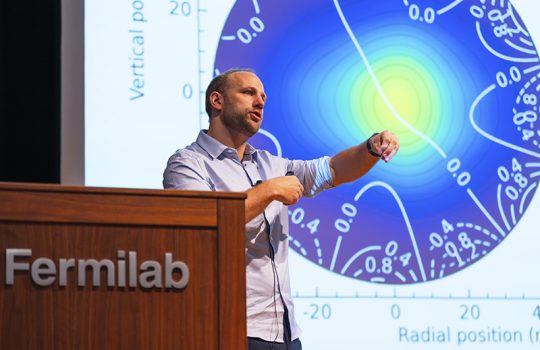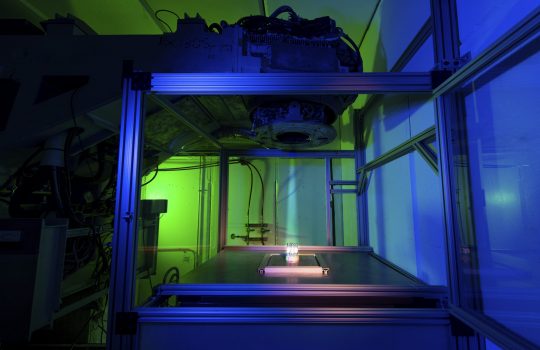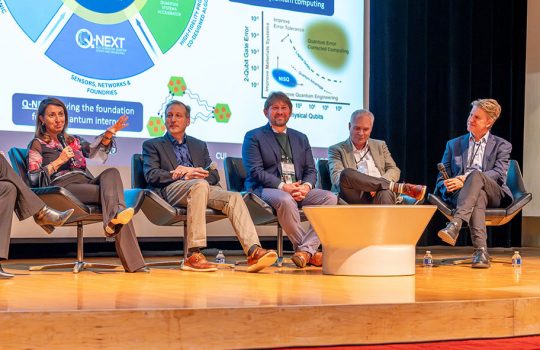A team of researchers from the U.S. Department of Energy’s Fermi National Accelerator Laboratory, Caltech, NASA’s Jet Propulsion Laboratory, University of Geneva and Federico Santa María Technical University in Chile recently tested a new technology to determine whether superconducting microwire single photon detectors, or SMSPDs, are feasible for use in future particle physics experiments. The results found that the SMSPDs were able to detect a variety of particles with impressive detection efficiency, making them a promising technology to advance particle physics research and dark matter detection. This achievement represents a significant step toward developing advanced detectors for next-generation particle physics experiments.
The groundbreaking study was conducted at Fermilab, where an array of SMSPDs was used to measure particle efficiency and time resolution while detecting high-energy particles such as protons, electrons and pions. Efficient and accurate detection these particles is essential to enhancing scientists’ understanding of fundamental physics.
“We are very excited to work on cutting-edge detector R&D like SMSPDs because they may play a vital role in capstone projects in the field such as the planned Future Circular Collider or an International Muon Collider,” said Fermilab scientist Cristián Peña, who led the research. “And we are thrilled to have assembled a world-class team across several institutions to push this emerging research to the next level.”
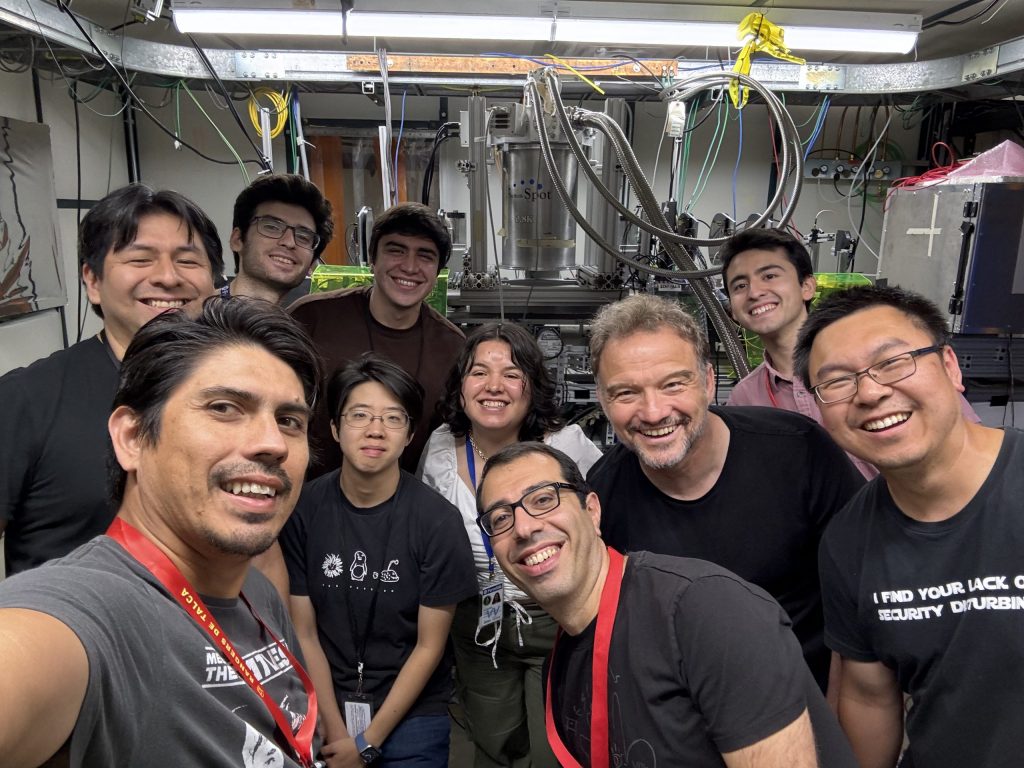
Traditional particle detectors, while effective, often face limitations in sensitivity, spatial resolution and time resolution — critical requirements for accurately detecting particles. The need for ever more precise particle detectors has driven researchers to explore new sensing materials and technologies.
The SMPSD arrays, which were designed and fabricated at Jet Propulsion Laboratory, or JPL, are a variation of high-performing superconducting nanowire single photon detectors, or SNSPDs. Both devices work similarly. A thin film of superconducting material — in this case, 3-nanometer-thick tungsten silicide — is patterned into 1.5-micron-wide wires covering an active area that detects charged particles as they deposit energy into the sensor. Researchers apply a bias current just below the maximum current the superconducting wire can sustain. Once the charged particles deposit enough energy to break the superconductivity, the bias current diverts from the wire to produce a detectable electrical pulse.
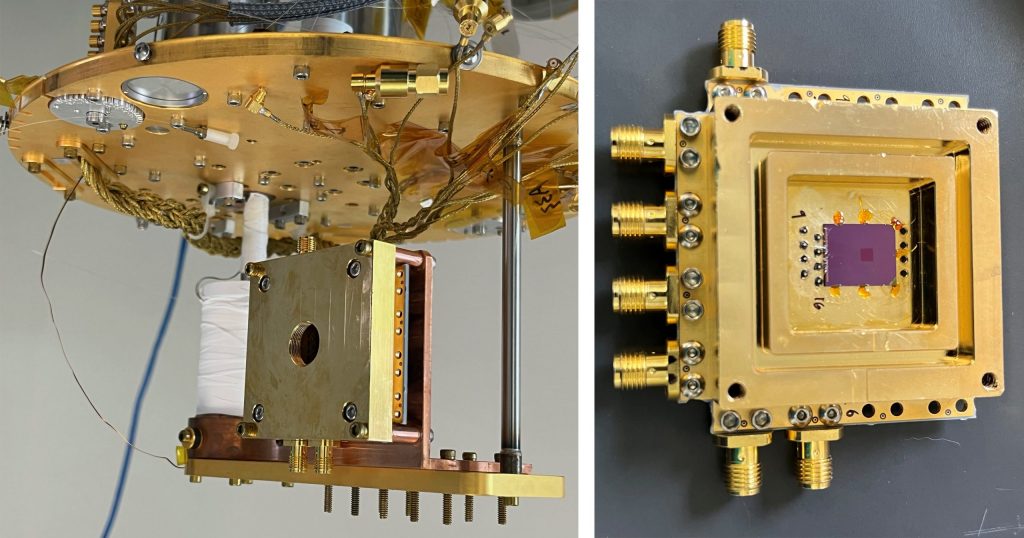
SNSPDs have been instrumental in fields like quantum information science and space exploration due to their ultra-low energy thresholds and exceptional time resolution. For example, JPL develops them for space-based optical communications, while Fermilab uses them in its quantum networks, dark matter research and astrophysics applications. However, for particle physics, their use has been limited because of their small active detection area and little to no particle beam studies.
In contrast, SMSPDs have a much larger active detection area than their nanowire cousins, marking a significant step forward for the large particle detectors needed for particle physics experiments.
The researchers reported a consistent detection efficiency using the SMSPDs across different detection areas and bias currents. A silicon tracking telescope installed at Fermilab’s Test Beam Facility provided the precise and crucial spatial resolution needed to accurately measure detection efficiency. In addition, the timing resolution, which is essential to accurately track particles in next-generation accelerator-based experiments, was measured for the first time for such charged particles.

“This is significant step toward developing advanced detectors for future particle physics experiments,” said coauthor Si Xie, a scientist at Fermilab with a joint appointment at Caltech as a research scientist. “This is just the beginning. We have the potential to detect particles lower in mass than we could before, as well as exotic particles like those that may constitute dark matter.”
The research team is already working to further improve SMSPD arrays and other similar technologies.
“We are in the process of optimizing SMSPD arrays for high-energy particle detection in terms of time resolution and detection efficiency so this technology can be used in next-generation accelerator-based experiments,” said Christina Wang, a Lederman Fellow at Fermilab who is also a co-author on this study. “We will continue to test these optimized arrays with greater precision.”
“In future experiments, the team plans to explore using SMSPD arrays in accelerator-based experiments by characterizing their ability to operate effectively in high-radiation environments with high-particle occupancy,” added Wang.
These are crucial steps toward integrating this promising technology into tomorrow’s particle detectors to help discover new physics phenomena.
The study in the Journal of Instrumentation is titled “High energy particle detection with large area superconducting microwire array” and was funded by the U.S Department of Energy, Fermi National Accelerator Laboratory, the National Agency for Research and Development (ANID) in Chile and the Federico Santa María Technical University.
Fermi National Accelerator Laboratory is supported by the Office of Science of the U.S. Department of Energy. The Office of Science is the single largest supporter of basic research in the physical sciences in the United States and is working to address some of the most pressing challenges of our time. For more information, please visit science.energy.gov.

